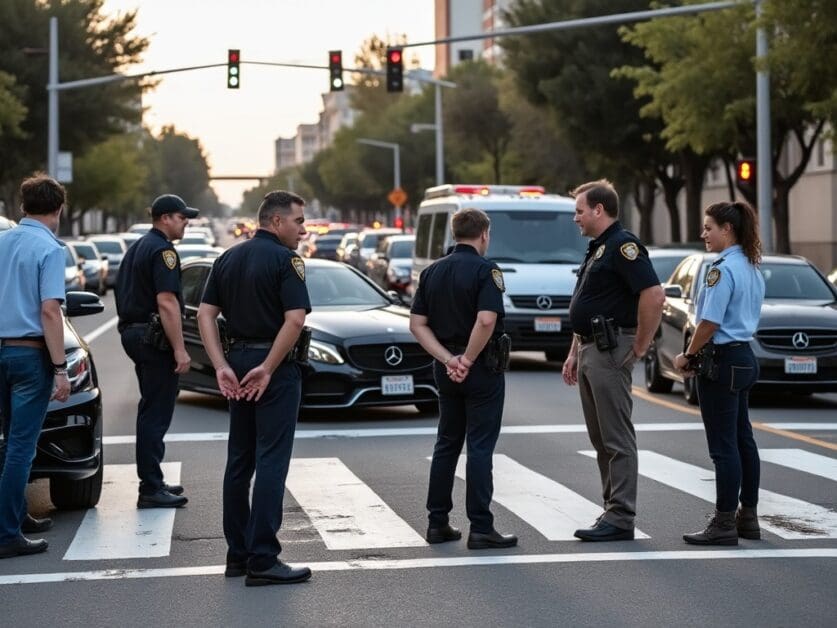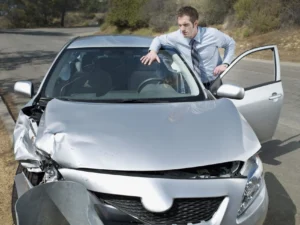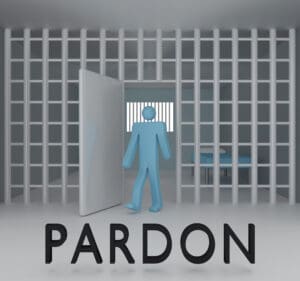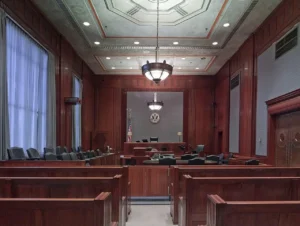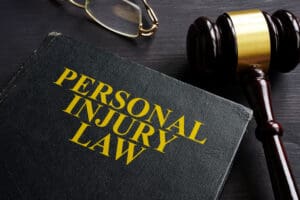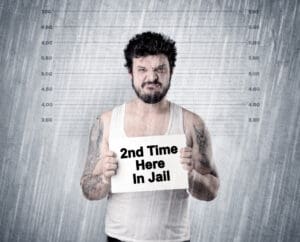Pedestrian accidents in California are unfortunately common, and when they happen, victims may be left wondering about their legal rights, especially if they were crossing the street without using a crosswalk. California has complex traffic laws when it comes to pedestrian accidents, particularly for those who might not have been following the strict rules for crossing at designated locations. However, even if a pedestrian was not using a crosswalk, they may still have the ability to file a claim depending on the circumstances of the accident.
In this article, we will examine the legal framework surrounding pedestrian accidents in California, the responsibilities of both pedestrians and drivers, and how compensation can be pursued even when crossing outside of a crosswalk. We’ll also address related issues, such as comparative fault and how to establish negligence in pedestrian accident cases.
Understanding Pedestrian Laws in California
Before diving into whether a pedestrian accident victim can file a claim after crossing without a crosswalk, it is important to understand California’s pedestrian laws. California Vehicle Code outlines specific duties and rights of both drivers and pedestrians. Pedestrians are generally required to use crosswalks at intersections, especially when traffic signals are present, and they must obey traffic signals designed for pedestrians. However, not all pedestrian accidents happen at designated crosswalks, and the absence of a crosswalk does not automatically negate a pedestrian’s right to file a claim.
Jaywalking Laws in California
In California, crossing the street outside of a designated crosswalk is often referred to as jaywalking, and while it is technically illegal, it doesn’t necessarily mean that the pedestrian is at fault in an accident. According to California Vehicle Code Section 21955, pedestrians are required to use crosswalks when crossing between adjacent intersections controlled by traffic signals. This means that if you are crossing mid-block or at a location without a traffic signal or crosswalk, you could be cited for jaywalking.
However, just because a pedestrian is in violation of jaywalking laws, it does not automatically exempt a driver from being held liable for an accident. Drivers have a duty to exercise care and avoid hitting pedestrians, even if they are crossing outside of a crosswalk. This is where comparative fault laws come into play, as both the driver and the pedestrian can share responsibility for the accident.
Can You File a Claim After Crossing Without a Crosswalk?
Even if a pedestrian was not in a crosswalk at the time of the accident, they may still be able to file a personal injury claim. The key to pursuing a claim is demonstrating that the driver was negligent and that this negligence contributed to or caused the accident. Negligence is established when a driver fails to exercise reasonable care under the circumstances, such as by speeding, texting while driving, or failing to yield to pedestrians.
Establishing Negligence in Pedestrian Accident Cases
To file a successful claim, it is essential to establish the driver’s negligence. In pedestrian accident cases, some common examples of driver negligence include:
- Failing to yield to a pedestrian
- Speeding or reckless driving
- Driving under the influence of alcohol or drugs
- Distracted driving, such as texting or using a phone
- Running a red light or stop sign
If the driver was negligent in any of these ways, the pedestrian accident lawyer will build a case to show that the driver’s actions were the primary cause of the accident, regardless of whether the pedestrian was in a crosswalk. For example, if a pedestrian was crossing the street outside of a crosswalk, but the driver was speeding and failed to stop in time, the driver may still be found partially or fully at fault.
The Role of Comparative Fault in Pedestrian Accidents
California follows the legal principle of comparative fault, also known as comparative negligence, which means that more than one party can be held responsible for an accident. Even if the pedestrian was partially at fault for not using a crosswalk, they can still recover damages under California’s comparative fault rules, as long as the driver also shares some degree of fault.
In a case of comparative fault, the court or insurance company assigns a percentage of fault to both the pedestrian and the driver. For example, a pedestrian may be found 30% at fault for jaywalking, while the driver is found 70% at fault for not paying attention and failing to stop in time. The pedestrian’s compensation will then be reduced by their percentage of fault. So, if the total damages are $100,000, the pedestrian would receive $70,000 after a 30% reduction due to their share of fault.
How Comparative Fault Affects Compensation
While comparative fault can reduce the amount of compensation a pedestrian receives, it does not eliminate their ability to recover damages. Even if the pedestrian was largely at fault for crossing outside of a crosswalk, they may still be entitled to compensation for:
- Medical expenses, including emergency room visits, surgeries, and rehabilitation
- Lost wages if the pedestrian is unable to work due to their injuries
- Pain and suffering caused by the accident
- Property damage, such as damage to personal belongings at the time of the accident
A skilled pedestrian accident lawyer can help minimize the impact of comparative fault and maximize the compensation available to the victim.
What Evidence Is Needed for a Pedestrian Accident Claim?
To build a strong case, it is essential to gather as much evidence as possible following a pedestrian accident. Pedestrian accident lawyers will often rely on several types of evidence to establish the driver’s negligence and prove the extent of the victim’s injuries.
1. Police Reports
The police report is one of the most critical pieces of evidence in a pedestrian accident claim. After an accident, law enforcement will typically respond to the scene, document what happened, and create a report detailing the circumstances of the crash. The report may include statements from witnesses, the drivers involved, and the pedestrian, as well as any citations issued.
2. Witness Statements
Witnesses to the accident can provide valuable testimony to support the pedestrian’s claim. Witness statements can help corroborate the pedestrian’s account of the accident and establish the driver’s negligence. For example, if a witness saw the driver texting or speeding before the crash, their statement can be crucial in proving fault.
3. Traffic Camera Footage
In some cases, traffic cameras or nearby surveillance cameras may have captured the accident. Video footage can provide clear evidence of what happened and show whether the driver or pedestrian was at fault. Your pedestrian accident lawyer can help obtain this footage as part of the investigation.
4. Medical Records
Medical records are essential for proving the extent of the pedestrian’s injuries and the resulting medical expenses. These records include emergency room reports, doctor’s notes, x-rays, and any other documentation related to the injuries sustained in the accident. Medical records also help establish the pain and suffering experienced by the victim.
5. Photographic Evidence
Photos of the accident scene, the vehicles involved, and the pedestrian’s injuries can provide valuable evidence in a pedestrian accident claim. These photos can help demonstrate the severity of the accident and the impact it had on the pedestrian.
What Damages Can Be Recovered in a Pedestrian Accident Claim?
Pedestrian accident victims may be entitled to several types of damages, depending on the extent of their injuries and the circumstances of the accident. Personal injury claims in pedestrian accidents typically seek compensation for both economic and non-economic damages.
1. Medical Expenses
Medical expenses are often the largest component of a pedestrian accident claim. These include:
- Emergency medical treatment
- Hospitalization
- Surgeries
- Physical therapy and rehabilitation
- Prescription medications
- Ongoing medical care
The victim can recover compensation for both past and future medical expenses related to the accident.
2. Lost Wages
If the pedestrian is unable to work due to their injuries, they may be entitled to compensation for lost wages. This includes not only the income they have already lost but also any future wages they will be unable to earn due to their injuries. If the pedestrian is permanently disabled, their lawyer may seek compensation for lost earning capacity.
3. Pain and Suffering
In addition to economic damages, pedestrian accident victims can recover compensation for pain and suffering. Pain and suffering refers to the physical pain and emotional distress caused by the accident and the injuries sustained. This can include trauma, anxiety, depression, and the loss of enjoyment of life.
4. Property Damage
Pedestrian accidents can also result in property damage, such as damage to personal belongings like cell phones, clothing, or other items that were in the pedestrian’s possession at the time of the accident. The victim can seek compensation for the cost of repairing or replacing these items.
The Importance of Hiring a Pedestrian Accident Lawyer
While it may be possible to pursue a claim on your own, hiring an experienced pedestrian accident lawyer can significantly increase your chances of success. A lawyer can handle the complex legal aspects of your case, gather the necessary evidence, and negotiate with the insurance company to ensure you receive fair compensation.
1. Navigating the Legal Process
The legal process can be complicated, especially when dealing with comparative fault or disputes over liability. A pedestrian accident lawyer understands California’s pedestrian laws and how to navigate the claims process effectively. They will handle all communication with the insurance company and opposing legal teams, allowing the victim to focus on recovering from their injuries.
2. Maximizing Compensation
Insurance companies often try to minimize payouts by offering low settlements or disputing the severity of the victim’s injuries. A lawyer will fight to ensure the pedestrian receives full compensation for their injuries, including medical expenses, lost wages, and pain and suffering. They will also negotiate with the insurance company to reach a fair settlement or, if necessary, take the case to court.
Conclusion: Can You Make a Claim Without a Crosswalk?
While crossing the street without a crosswalk may complicate a pedestrian accident claim, it does not automatically bar a victim from seeking compensation. By proving the driver’s negligence and using evidence to support the claim, a pedestrian can still recover damages even if they were outside of a designated crosswalk. California’s comparative fault laws allow victims to pursue compensation as long as the driver was partially at fault for the accident.
If you’ve been involved in a pedestrian accident and were not using a crosswalk, it’s essential to speak with an experienced pedestrian accident lawyer who can assess your case, gather evidence, and help you secure the compensation you deserve.

